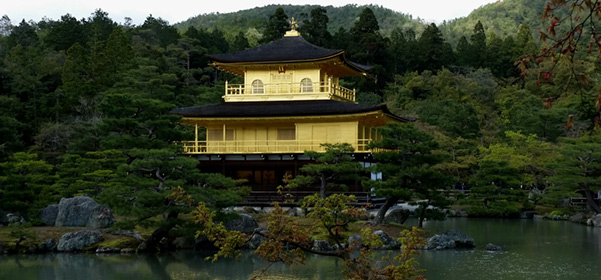Earlier this year, my dad and I spent a few weeks travelling around Honshu, Japan’s largest island and the home to popular destinations Tokyo, Osaka, Kyoto and Hiroshima. Early April was the ideal time for a visit – we managed to catch the end of the Cherry Blossom Festival without suffering the high prices that come with flights in peak season.
Our flight arrived at Narita, Tokyo’s international airport, which lies about 80km east of the capital. Travelling to Tokyo only took about an hour on the JR Narita Express train. The view was stunning – the train cutting through mountains and countryside to reach the dense urban streets of the world’s most populous city (so try to get a windows seat).
The train fare into the city costs about ¥3000, but is covered under the JR Rail Pass; a special pass for tourists which is only available for purchase outside of Japan. The pass allows unlimited travel on the Japan Rail train lines, including some of those famously fast bullet trains, and other bus routes. Although Tokyo alone could keep you captivated for an entire holiday, you should consider a JR Pass, as the value is unbeatable if you want to see more of the country.

Safely docked in Tokyo, we spent a few days wandering around, sightseeing and taking in the local cuisine and culture, before heading north to enjoy the cherry or sakura blossoms and the festivals.
We headed into Osaka a day early, assuming that finding some last-minute accommodation would be easy. How wrong we were. The hotel in which we were booked for our Osaka stay had no vacancies for that night. Seiko, one of the hotel’s friendly staff members, spent close to an hour calling other hotels in the area looking for vacancies, without any success. After apologising emphatically, she cautiously asked if I was familiar with ’manga kissatens’ or ‘manga cafés’.
Similar to internet cafés, manga cafés allow people to visit, and pay by the hour for access to the internet as well as a vast library of manga (Japanese comic books). The establishments are quite popular with workers, as they are the cheapest place to stay overnight in the city if they miss the last train home.

While I wouldn’t recommend the experience, without any alternative, it was a lifesaver – and a cheap one, at less than $20 for the overnight stay.
Osaka made a great hub for day trips to Nara and its stunning Buddhist temples, gardens and bowing deer, as well as to Kyoto – Japan’s former capital city and home of the head shrine of Inari, one of the spirits worshipped in the Shinto religion.

The bullet train, with a quick stop off to enjoy the view of Mt Fuji, had us back in Tokyo in a few hours. I topped off my trip with a visit to the Robot Restaurant, in Kabukicho (Tokyo’s red light district). The unbelievable Japanese cabaret show featured a robotic Jazz quintet, taiko drummers, incredible costumes and, during intermissions, Kirin beer poured directly from beer keg backpacks.

Related articles:
Seoul: tips from an insider
Japan: What you need to know
When to hire a travel guide

